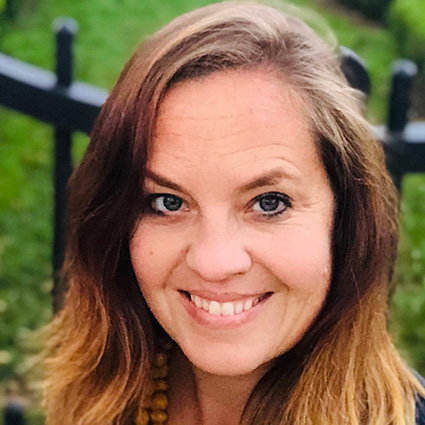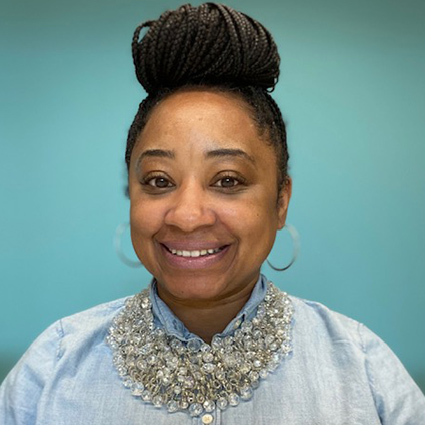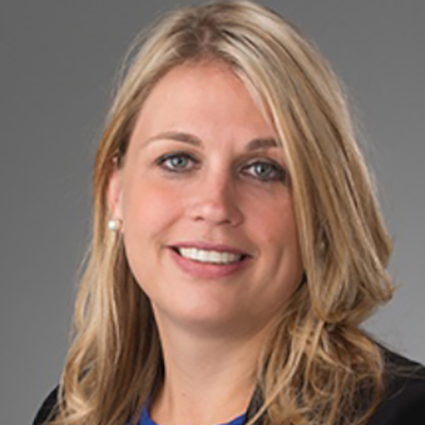 Mindfulness and other self-care strategies can really make a difference for early childhood teachers who are feeling stressed out, experts say.
Mindfulness and other self-care strategies can really make a difference for early childhood teachers who are feeling stressed out, experts say.By Erin Duffy
A funny thing happened when staff at several Educare schools were trained to promote mindfulness and executive function in kids.
It wasn’t just the 3- and 4-year-olds who benefited from “belly breaths” and exercises to center their mind and focus.
There was a spillover effect. Early childhood teachers and staff who were teaching kids to pause, take deep breaths, and relax their muscles realized the same strategies worked on adults.
 Jolene Johnson
Jolene Johnson“We found that teachers were saying, ‘Well, I realized I needed to take time for myself. I needed breathing strategies,’” said Jolene Johnson, the director of the department of education and child development at the University of Nebraska Medical Center’s Munroe-Meyer Institute.
Teachers, like anyone, deserve to be healthy and satisfied with their job. But there’s another upside: when stressed-out adults feel better, they teach better. As the pandemic wears on, there’s been a renewed emphasis on how to address the mental, physical, and emotional needs of educators before more burn out.
Teaching takes a toll
Kate Gallagher, the director of research and evaluation at the Buffett Early Childhood Institute at the University of Nebraska, has studied how to support the well-being of the early childhood workforce and worked as a teacher and child care director.
At one program she led, “it became so apparent we were making all kinds of demands on teachers regarding their ability to guide children’s social behavior and relationship-building and really not investing in how teachers were doing,” she said. “Teachers who had really difficult times with kids weren’t well themselves.”
Teachers are human—they sometimes bring their personal lives into the classroom. Gallagher remembers teaching Kindergarten with a new baby at home and trying to explain to her class that “No, Ms. Gallagher isn’t mad at you, she’s just cranky and tired because her baby won’t sleep.”
The Buffett Institute dedicated its fall 2021 Professional Development for All series to teacher well-being. Staff at the Munroe-Meyer Institute, Nebraska Extension, the Nebraska Center on Reflective Practice, and the Happy Teacher Project, among others, have been working on strategies to reduce educator stress, improve their physical and mental health, and strengthen their bonds with children.
Caring for small children who can’t easily communicate their needs can take a mental and physical toll.
The Happy Teacher Project at the University of Oklahoma-Tulsa found early childhood teachers suffered from back and knee strain from hoisting babies and toddlers out of highchairs or onto a changing table. Some couldn’t find time for bathroom breaks, leading to urinary tract infections. And classrooms can be jarringly loud—the noise from crying or excited children can reach the same decibel levels as alarm clocks or hair dryers.
Ask what teachers need
So what can help? While designing the fall professional development series, Amy Schmidtke, the Buffett Institute’s director of professional learning, said her team didn’t want to fall back on self-care clichés.
They wanted to provide educators with realistic strategies and challenge leaders to find time and space for staff to engage in those practices. First and foremost: they urged supervisors to ask their staff what they needed and provide them with options.
“Say I’m an administrator and I care about self-care and wellness for my teachers, so I’m going to bring in a yoga instructor,” Schmidtke said. “OK, but do you know if the teachers in your program or building even want yoga?”
 Nicole Looper
Nicole LooperThere’s also the idea of professional well-being. Some teachers may need to feel reinvigorated by their work by learning a new skill or leading a project.
“How are we learning, how are we being innovators, how are we having a voice of leadership in our spaces,” Schmidtke said. “That is a way to lift up our spirits and our excitement.”
Nicole Looper, the director of the Nelson Mandela Early Childhood Development Center in North Omaha, checks in with her team and encourages them to connect with what brings them joy—one of her teachers loves to watch her dog at the dog park.
“A lot of fear has come up in teaching children in the early childhood settings when you think about COVID, and so we have to allow ourselves to recognize what we’re fearful of … and how we can overcome those fears,” Looper said. “I have to show I’m giving myself self-care and mental health breaks, too, as a leader, so I can be available for my team.”
Mindfulness exercises prove helpful for some
Mindfulness programs have grown in popularity, too.
Holly Hatton-Bowers, an assistant professor and early childhood extension specialist at the University of Nebraska–Lincoln who helped create the Cultivating Healthy Intentional Mindful Educators (CHIME) professional development program, defines mindfulness as focusing your attention, engaging with a curious, kind, and nonjudgmental mind, and practicing being in the present.
“Mindfulness also includes how we show up in our relationships, how present we can be, and what we are bringing to our relationships with families and children,” she said.
 Holly Hatton-Bowers
Holly Hatton-BowersWhile CHIME involves eight weeks of training, school staff or kids can practice simple exercises: engage in a body scan, focusing on identifying any tense areas in the body and relaxing. The goal is to zero in on what one is doing in the moment and notice that with all your senses.
Teachers who participated in CHIME programs reported better sleep, less stress, and more control over their emotions in the classroom. They felt less judgmental and more accepting toward themselves, students, and families.
Starbucks gift cards and gratitude journals alone won’t erase the stresses of teaching or the systemic challenges that child care workers face, like low pay and a lack of respect. But giving educators some new skills or tools to support their well-being can help.
“Society teaches you as a teacher that you should be so mission-driven: ‘I’m going to do it for the love of children,’” Schmidtke said. “And that tricks you into feeling like you don’t deserve what you need for yourself”—bathroom breaks, chairs with back supports, a living wage. “Teachers can serve children and take care of themselves.”
Erin Duffy works at the Buffett Early Childhood Institute at the University of Nebraska and writes about early childhood issues that affect children, families, educators, and communities. As a journalist, she spent more than five years covering education stories for daily newspapers.
Have a comment, a question, or a story idea? Reach Erin at erinduffy@nebraska.edu